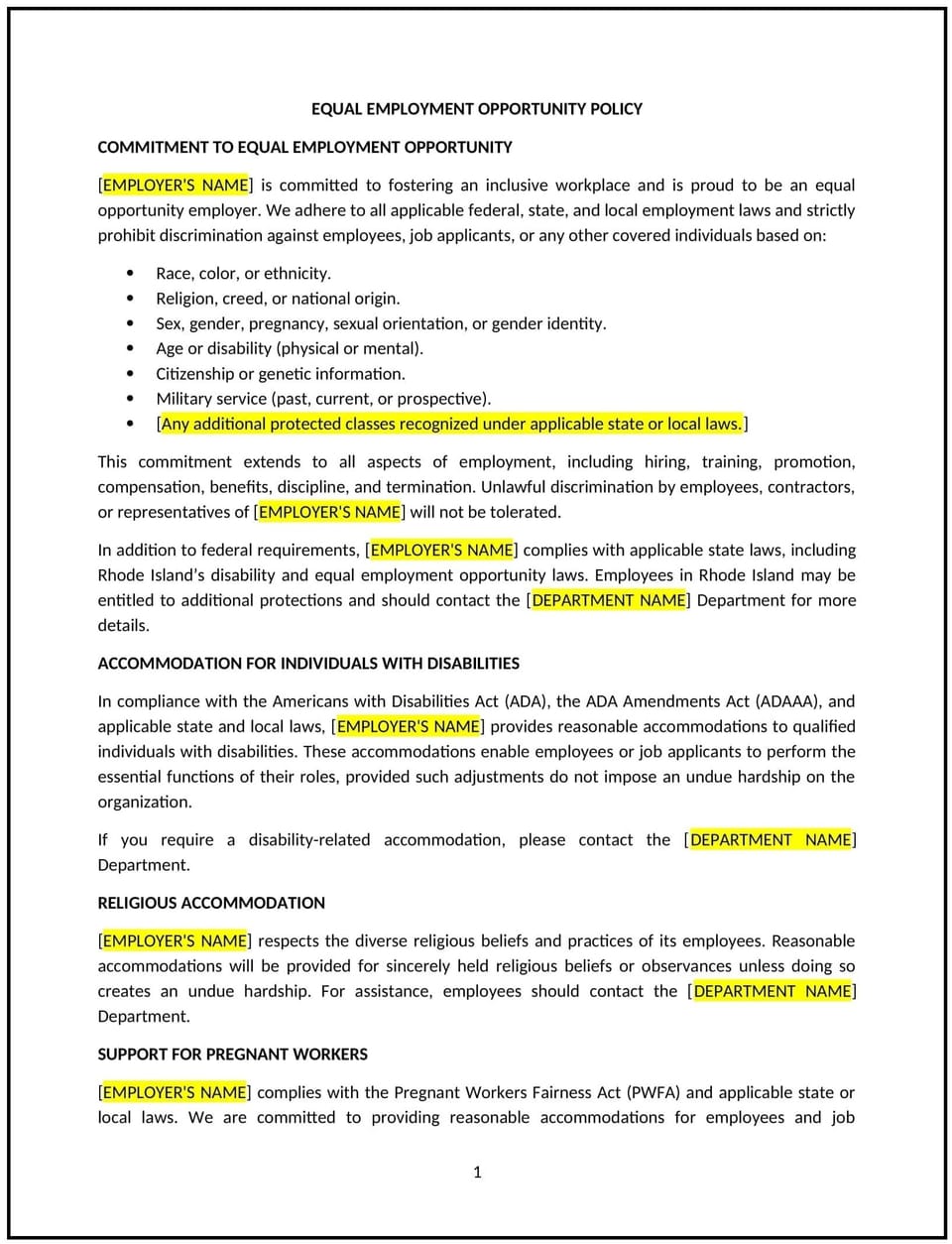Equal employment opportunity policy (Rhode Island): Free template

Equal employment opportunity policy (Rhode Island)
This equal employment opportunity (EEO) policy is designed to help Rhode Island businesses promote fairness and prevent discrimination in the workplace. It outlines commitments to providing equal opportunities for all employees and applicants, regardless of protected characteristics.
By adopting this policy, businesses can foster inclusivity, comply with anti-discrimination laws, and align with best practices for fair employment.
How to use this equal employment opportunity policy (Rhode Island)
- Define protected characteristics: Specify categories protected under the policy, such as race, gender, age, or disability.
- Establish hiring practices: Outline procedures for ensuring fair and unbiased recruitment.
- Address workplace behavior: Prohibit discrimination, harassment, and retaliation in all workplace interactions.
- Train employees: Educate staff on EEO principles and the importance of inclusivity.
- Review and update: Assess the policy annually to ensure it aligns with evolving business needs and legal standards.
Benefits of using this equal employment opportunity policy (Rhode Island)
This policy offers several advantages for Rhode Island businesses:
- Promotes inclusivity: Ensures all employees and applicants are treated fairly and with respect.
- Reduces legal risks: Aligns with federal and state anti-discrimination laws, minimizing the risk of lawsuits.
- Enhances employee satisfaction: Demonstrates a commitment to fairness and equal opportunities.
- Builds trust: Shows employees and stakeholders that the business values diversity and inclusion.
- Aligns with best practices: Supports adherence to fair employment standards.
Tips for using this equal employment opportunity policy (Rhode Island)
- Communicate the policy: Share the policy with employees and include it in the employee handbook.
- Provide training: Educate managers and staff on EEO principles and how to prevent discrimination.
- Monitor compliance: Regularly review hiring practices and workplace behavior to ensure adherence to the policy.
- Address issues promptly: Take corrective action if discrimination or harassment is reported.
- Update regularly: Assess the policy annually to ensure it aligns with evolving business needs and legal standards.
Q: How does this policy benefit businesses?
A: By adopting this policy, businesses can promote inclusivity, reduce legal risks, and enhance employee satisfaction.
Q: What types of discrimination are prohibited under this policy?
A: The policy prohibits discrimination based on race, gender, age, disability, religion, and other protected characteristics.
Q: Who is responsible for enforcing this policy?
A: HR and managers are typically responsible for ensuring compliance with the policy.
Q: How should businesses handle discrimination complaints?
A: Businesses should investigate complaints promptly and take corrective action, such as disciplinary measures or training.
Q: How often should businesses review this policy?
A: Businesses should review the policy annually or as needed to ensure it aligns with evolving business needs and legal standards.
This article contains general legal information and does not contain legal advice. Cobrief is not a law firm or a substitute for an attorney or law firm. The law is complex and changes often. For legal advice, please ask a lawyer.


